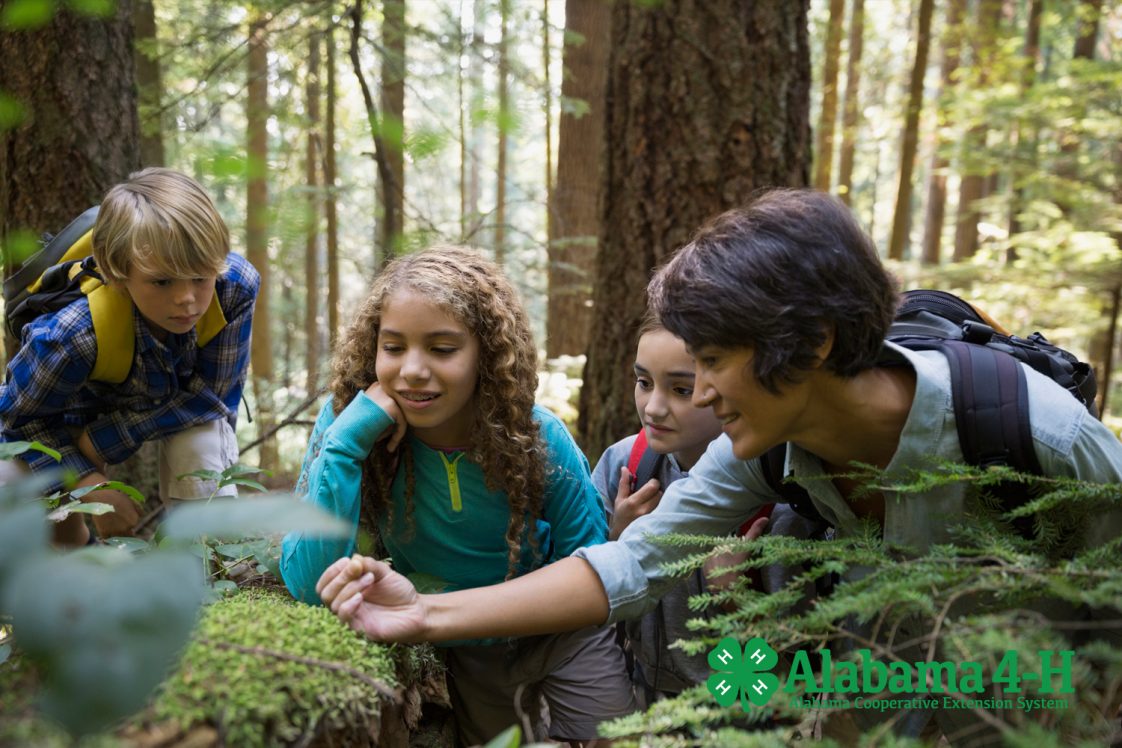Outdoor Education

Alabama is a state rich in natural resources and ranked fifth in the nation in terms of biodiversity (variety of fauna and flora). This is possible because of our state’s extensive river system and five distinct physiographic land sections that include mountains in the northeastern part of the state to white sandy beaches along the Gulf of Mexico. However, Alabama also ranks fourth nationally in terms of species at risk and second for extinction.
The 4-H Junior Naturalist Program (JNP) is a statewide youth program that promotes awareness, understanding and respect of Alabama’s natural world. Youth will become well-informed citizens of Alabama in the area of natural resources, will develop a positive conservation ethic, will become aware of career opportunities, will learn about ecology, and more. The 4-H Junior Naturalist Program uses a variety of hands-on activity based modules that address a plethora of natural resource concepts.
Program Learning Modules
-
- Module 1, Tree Identification 101: This module teaches the basics of tree identification using a taxonomy key that covers the most common native tree species.
- Module 2, Skins and Skulls: This module introduces youth to learning about mammals native to Alabama. It also contains plastic replicas of their skulls as youth learn about carnivores, herbivores, and omnivores.
- Module 3, Scats and Tracks: This module is a companion module to Skins and Skulls. This module contains rubber track molds (negatives) and hard resin tracks (positives) to go with the mammals listed in the Skins and Skulls kit. The module also contains latex scat replicas from each of the mammals.
- Module 4, Using a Compass: This module teaches youth how to use a compass to help them navigate across the landscape. It includes using the compass to complete an orienteering course.
- Module 5, Birding 101: This module focuses on bird identification and understanding bird behavior.
- Module 6, Investigating the Forest Floor: This module encourages youth to explore the forest floor as they learn about this important area within the forest ecosystem.
- Module 7, Crane Trunk: This module created by the International Crane Foundation helps educate Alabama youth about the sand hill crane populations and the small migratory population of whooping cranes that winter in the Wheeler Wildlife Refuge and surrounding area.
- Module 8, What’s a Herp: This module teaches youth about Alabama’s reptile and amphibian diversity and the role they play in a healthy ecosystem.
Visit the National 4-H website for additional curriculum resources.

